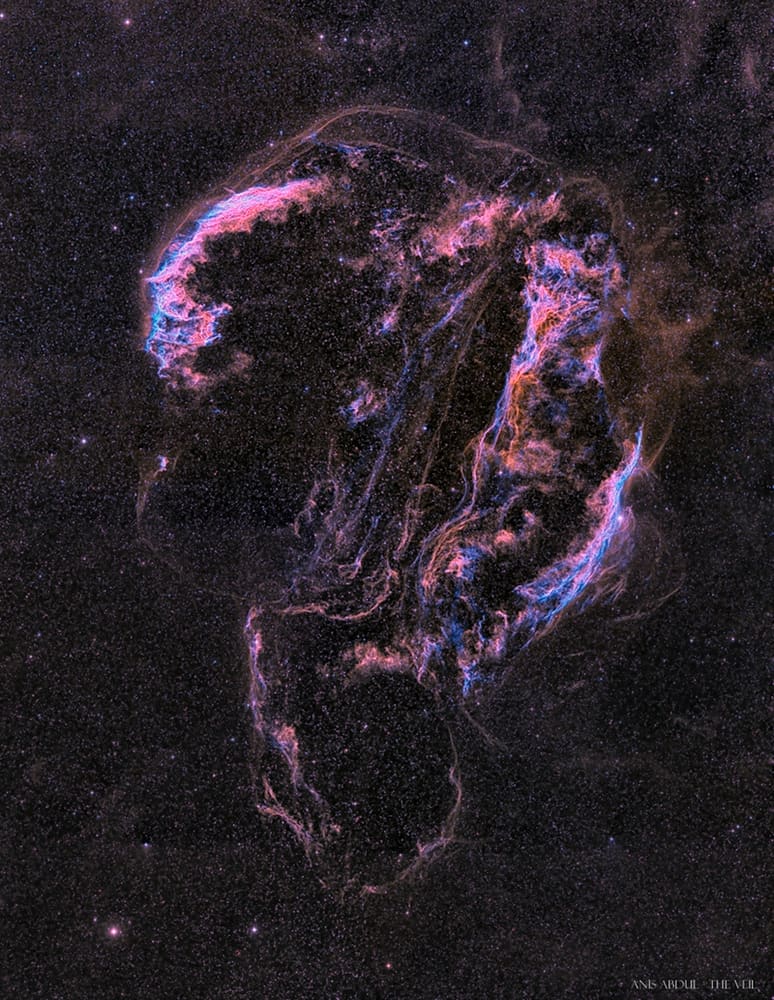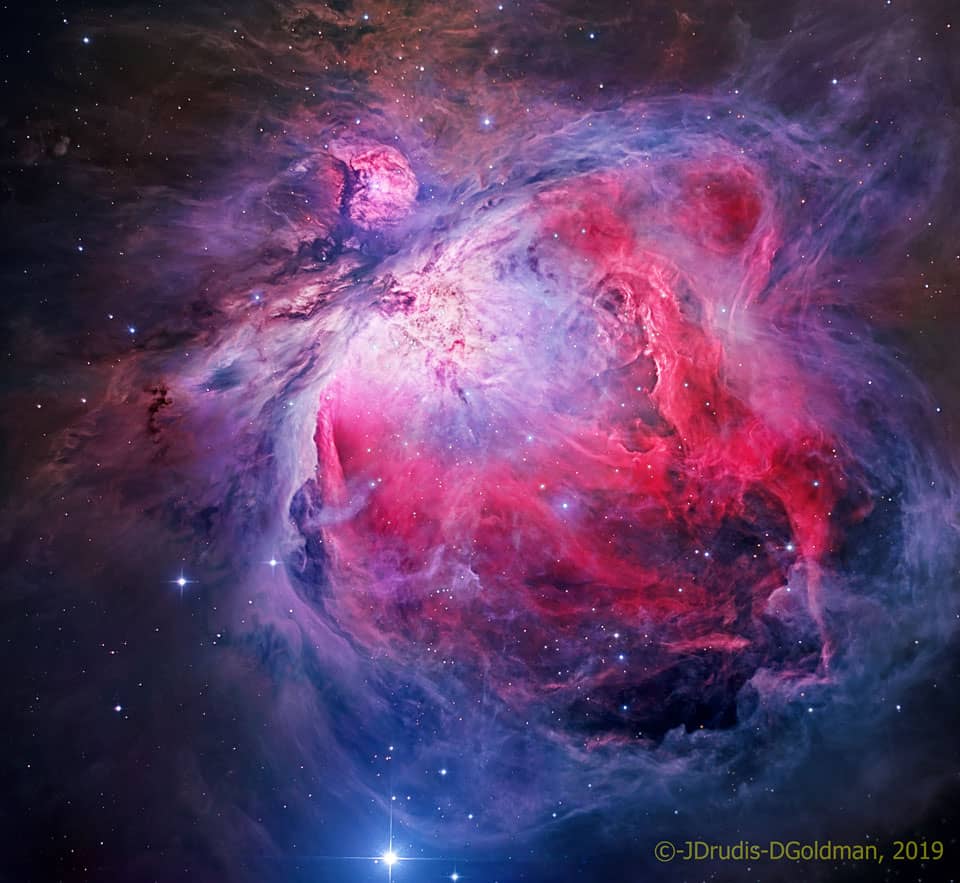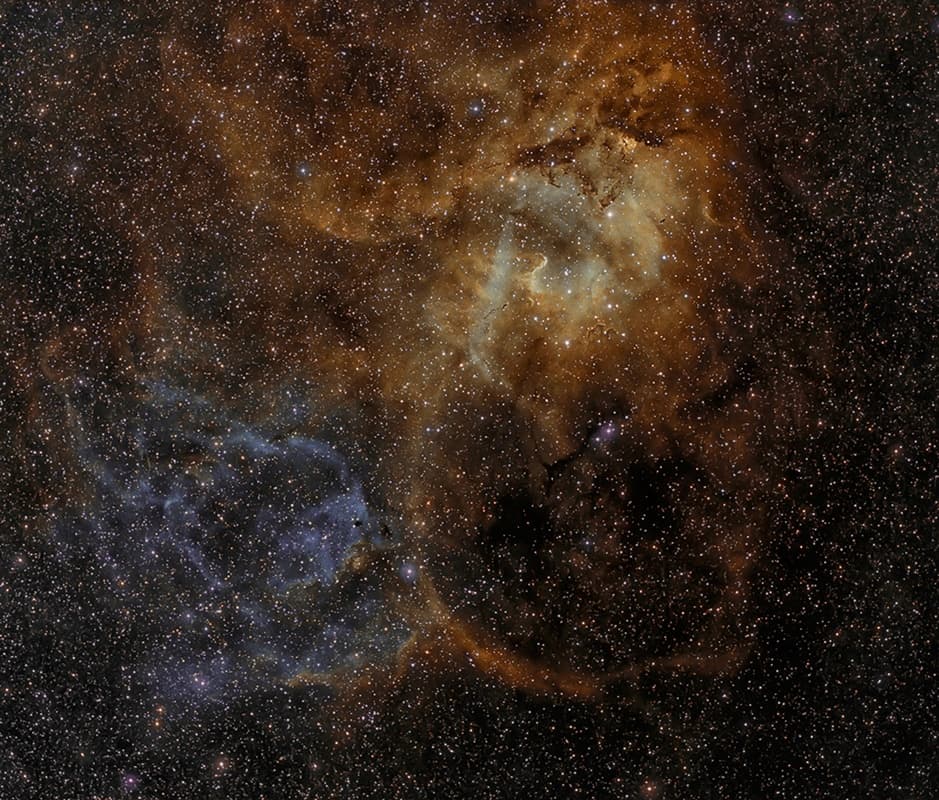Blog
Flamenco Fridays with Alegrias.
Alegrías (Spanish pronunciation: [aleˈɣɾi.as]) is a flamenco palo or musical form, which has a rhythm consisting of 12 beats. It is similar to Soleares. Its beat emphasis is as follows: 1 2 [3] 4 5 [6] 7 [8]9 [10] 11 [12]. Alegrías originated in Cádiz. Alegrías belongs to the group of palos called Cantiñas and it is usually played in a lively rhythm (120-170 beats per minute). The livelier speeds are chosen for dancing, while quieter rhythms are preferred for the song alone.
One of the structurally strictest forms of flamenco, a traditional dance in alegrías must contain each of the following sections: a salida (entrance), paseo (walkaround), silencio (similar to an adagio in ballet), castellana (upbeat section) zapateado (Literally “a tap of the foot”) and bulerías. This structure though, is not followed when alegrías are sung as a standalone song (with no dancing). In that case, the stanzas are combined freely, sometimes together with other types of cantiñas.
Recommended listenings for this palo include most singers from Cádiz, like Chano Lobato, La Perla de Cádiz, Aurelio Sellé, but also general singers like Manolo Caracol or La Niña de los Peines.
Also, you can listen “Mar Amargo” from Camarón and “La Tarde es Caramelo” from Vicente Amigo.
It is one of the cante chico forms of flamenco. The word Alegrías literally means “joys.”
more...This is from the makeup artist at the Village of Terror in Chippewa Falls Wi
in 2010 and 2011. I worked with the Bates Motel Orchestra and the Shotgun Wedding Band.

more...
A ghostly visage on a cosmic scale, these remains of shocked, glowing gas haunt planet Earth’s sky toward the constellation of Cygnus and form the Veil Nebula. The nebula itself is a large supernova remnant, an expanding cloud born of the death explosion of a massive star. Light from the original supernova explosion likely reached Earth over 5,000 years ago. Also known as the Cygnus Loop, the Veil Nebula now spans nearly 3 degrees or about 6 times the diameter of the full Moon. That translates to over 70 light-years at its estimated distance of 1,500 light-years. In fact, the Veil is so large its brighter parts are recognized as separate nebulae, including The Witch’s Broom (NGC 6960) below and right of center. At the top left you can find the Spectre of IC 1340. Happy Halloween!

Ali Ibrahim “Ali Farka” Touré (31 October 1939 – 6 March 2006) was a Malian singer and multi-instrumentalist, and one of the African continent’s most internationally renowned musicians. His music is widely regarded as representing a point of intersection of traditional Malian music and its North American cousin, the blues. The belief that the latter is historically derived from the former is reflected in Martin Scorsese‘s often quoted characterization of Touré’s tradition as constituting “the DNA of the blues”. Touré was ranked number 76 on Rolling Stone‘s list of “The 100 Greatest Guitarists of All Time” and number 37 on Spin magazine’s “100 Greatest Guitarists of All Time”.
Touré was born in 1939 in the village of Kanau, on the banks of the Niger River in Gourma-Rharous Cercle in the northwestern Malian region of Tombouctou. His family belonged to the Arma community and moved to the nearby village of Niafunké when he was still an infant. His father died serving in the French Army in 1940. He was the tenth son of his mother but the only one to survive past infancy. “The name I was given was Ali Ibrahim, but it’s a custom in Africa to give a child a strange nickname if you have had other children who have died”,[7] Touré was quoted as saying in a biography on his Record Label, World Circuit Records. His nickname, “Farka”, chosen by his parents, means “donkey“, an animal admired for its tenacity and stubbornness: “Let me make one thing clear. I’m the donkey that nobody climbs on!” Ethnically, he was part Songhai, part Fula.
As the first African bluesman to achieve widespread popularity on his home continent, Touré was often known as “the African John Lee Hooker“.Musically, the many superpositions of guitars and rhythms in his music were similar to John Lee Hooker’s hypnotic blues style. He usually sang in one of several African languages, mostly Songhay, Fulfulde, Tamasheq or Bambara as on his breakthrough album, Ali Farka Touré, which established his reputation in the world music community.
more...Thomas Richard Paxton (born October 31, 1937) is an American folk singer-songwriter who has had a music career spanning more than fifty years. In 2009, Paxton received a Grammy Lifetime Achievement Award. He is noteworthy as a music educator as well as an advocate for folk singers to combine traditional songs with new compositions.
Paxton’s songs have been widely recorded, including modern standards such as “The Last Thing on My Mind“, “Bottle of Wine“, “Whose Garden Was This”, “The Marvelous Toy”, and “Ramblin’ Boy”. Paxton’s songs have been recorded by Pete Seeger, Bob Dylan, The Weavers, Judy Collins, Sandy Denny, Joan Baez, Doc Watson, Harry Belafonte, Peter, Paul and Mary, The Seekers, Marianne Faithfull, The Kingston Trio, the Chad Mitchell Trio, John Denver, Dolly Parton and Porter Wagoner, Johnny Cash, Willie Nelson, Flatt & Scruggs, The Move, The Fireballs, and many others (see covers). Paxton was born on October 31, 1937, in Chicago, Illinois, United States, to Burt and Esther Paxton. His father was “a chemist, mostly self-educated”,[4] and as his health began to fail him, the family moved to Wickenburg, Arizona. It was here that young Paxton began riding horses at the numerous dude ranches in the area. It was also here that he was first introduced to folk music, discovering the music of Burl Ives and others.
https://www.youtube.com/watch?v=HW9n0O9Obtk
Booker Telleferro Ervin II (October 31, 1930 – August 31, 1970) was an American tenor saxophone player. His tenor playing was characterised by a strong, tough sound and blues/gospel phrasing. He is best known for his association with bassist Charles Mingus.
Ervin was born in Denison, Texas. He first learned to play trombone at a young age from his father, who played the instrument with Buddy Tate.After leaving school, Ervin joined the United States Air Force, stationed in Okinawa, during which time he taught himself tenor saxophone. After completing his service in 1953, he studied at Berklee College of Music in Boston. Moving to Tulsa in 1954, he played with the band of Ernie Fields.
After stays in Denver and Pittsburgh, Ervin moved to New York City in spring 1958, initially working a day job and playing jam sessions at night. Ervin then worked with Charles Mingus regularly from late 1958 to 1960, rejoining various outfits led by the bassist at various times up to autumn 1964, when he departed for Europe. During the mid- 1960s, Ervin led his own quartet, recording for Prestige Records with, among others, ex-Mingus associate pianist Jaki Byard, along with bassist Richard Davis and Alan Dawson on drums.
https://www.youtube.com/watch?v=OxBFPnup_H4
more...Jean-Baptiste “Illinois” Jacquet (October 30, 1922 – July 22, 2004) was an American jazz tenor saxophonist, best remembered for his solo on “Flying Home“, critically recognized as the first R&B saxophone solo.
Although he was a pioneer of the honking tenor saxophone that became a regular feature of jazz playing and a hallmark of early rock and roll, Jacquet was a skilled and melodic improviser, both on up-tempo tunes and ballads. He doubled on the bassoon, one of only a few jazz musicians to use the instrument.
Jacquet was born to a Black Creole mother and father, named Marguerite Trahan and Gilbert Jacquet, in Louisiana and moved to Houston, Texas, as an infant, and was raised there as one of six siblings. His father was a part-time bandleader. As a child he performed in his father’s band, primarily on the alto saxophone. His older brother Russell Jacquet played trumpet and his brother Linton played drums.
At 15, Jacquet began playing with the Milton Larkin Orchestra, a Houston-area dance band. In 1939, he moved to Los Angeles, California, where he met Nat King Cole. Jacquet would sit in with the trio on occasion. In 1940, Cole introduced Jacquet to Lionel Hampton who had returned to California and was putting together a big band. Hampton wanted to hire Jacquet, but asked the young Jacquet to switch to tenor saxophone. In 1942, at age 19, Jacquet soloed on the Hampton Orchestra’s recording of “Flying Home“, one of the first times a honking tenor sax was heard on record. The record became a hit. The song immediately became the climax for the live shows and Jacquet became exhausted from having to “bring down the house” every night. The solo was built to weave in and out of the arrangement and continued to be played by every saxophone player who followed Jacquet in the band, notably Arnett Cobb and Dexter Gordon, who achieved almost as much fame as Jacquet in playing it. It is one of the few jazz solos to have been memorized and played very much the same way by everyone who played the song. He quit the Hampton band in 1943 and joined Cab Calloway‘s Orchestra. Jacquet appeared with Cab Calloway’s band in Lena Horne‘s movie Stormy Weather. In the earlier years of Jacquet’s career, his brother Linton Jacquet managed him on the chitlin circuit Linton’s daughter Brenda Jacquet-Ross sang in jazz venues in the San Francisco Bay Area in the 1990s to early 2000s, with a band called the Mondo Players.
more...https://www.youtube.com/watch?v=L9Vnk0LLaXw
more...The Great Nebula in Orion, an immense, nearby starbirth region, is probably the most famous of all astronomical nebulas. Here, glowing gas surrounds hot young stars at the edge of an immense interstellar molecular cloud only 1500 light-years away. In the featured deep image in assigned colors highlighted by emission in oxygen and hydrogen, wisps and sheets of dust and gas are particularly evident. The Great Nebula in Orion can be found with the unaided eye near the easily identifiable belt of three stars in the popular constellation Orion. In addition to housing a bright open cluster of stars known as the Trapezium, the Orion Nebulacontains many stellar nurseries. These nurseries contain much hydrogen gas, hot young stars, proplyds, and stellar jets spewing material at high speeds. Also known as M42, the Orion Nebula spans about 40 light years and is located in the same spiral arm of our Galaxy as the Sun.

Grace Barnett Wing Slick (born October 30, 1939) is an American singer-songwriter, musician, artist and former model, widely known in rock and roll history for her role in San Francisco‘s burgeoning psychedelic music scene in the mid-1960s. Her music career spanned four decades. She performed with The Great Society, Jefferson Airplane, Jefferson Starship and Starship. She also had a sporadic solo career. Slick provided vocals on a number of well-known songs, including “Somebody to Love,” “White Rabbit,” “We Built This City,” and “Nothing’s Gonna Stop Us Now.”
Grace Barnett Wing was born October 30, 1939, in the Chicago suburb of Highland Park, Illinois, to Ivan Wilford Wing (1907–1987), of Norwegian and Swedish descent, and Virginia Wing (née Barnett; 1910–1984).
In August 1965, Slick read an article in the San Francisco Chronicle about the newly formed Jefferson Airplane. Despite being situated in the growing musical center of San Francisco, Slick only half-heartedly considered music for a profession until she watched the band live at The Matrix. As a result, Slick (vocals, guitar), accompanied by husband Jerry Slick (drums), Jerry’s brother Darby Slick (lead guitar), and David Miner (bass guitar) formed a group called The Great Society. On October 15, 1965, the band made its debut performance at a venue known as the Coffee Gallery, and soon after Slick composed the psychedelic piece “White Rabbit“. The song, which she is purported to have written in an hour, is a reflection on the hallucinatory effects of psychedelic drugs; when performed live, it featured a speedier tempo and was an instant favorite among the band’s followers.[9] Although Slick was an equal contributor to The Great Society’s original material, Darby Slick pushed the band toward becoming a raga-influenced psychedelic act. By late 1965, they had become a popular attraction in the Bay Area. Between October and December 1965, The Great Society entered Golden State Recorders and recorded several tracks under the supervision of Sylvester Stewart. One single emerged from the demos, the Darby Slick-penned “Someone to Love” b/w “Free Advice” on the locally based Autumn Records subsidiary label “North Beach”. Grace Slick supplied vocals, guitar, piano, and recorder.
more...Trilok Gurtu (Kashmiri: ترلوک گرٹو, Marathi: त्रिलोक गुर्टू) (born 30 October 1951) is an Indian percussionist and composer, whose work has blended the music of his homeland with jazz fusion, world music and other genres.
He has released his own albums and has collaborated with many artists, including Terje Rypdal, Gary Moore, John McLaughlin, Jan Garbarek, Joe Zawinul, Michel Bisceglia, Bill Laswell, Maria João & Mário Laginha, and Robert Miles. Gurtu was born to Hindu Brahmin parents in Mumbai, India; he had a Kashmiri Pandit father and a Marathi mother and attended Don Bosco High School (Matunga) in Mumbai. His mother, singer Shobha Gurtu, encouraged him to learn playing tabla, and he studied playing the instrument under Shah Abdul Karim.
Poncho Sánchez (born Filoberto Sanchez, October 30, 1951) is a Mexican American conguero (conga player), Latin jazz band leader, and salsa singer. In 2000, he and his ensemble won the Grammy Award for Best Latin Jazz Album for their work on the Concord Picante album Latin Soul. Sanchez has performed with artists including Cal Tjader, Mongo Santamaría, Hugh Masekela, Clare Fischer, and Tower of Power. The youngest of eleven children, Poncho Sanchez was born in Laredo, Texas and reared in Norwalk, California. Growing up, he was exposed to and influenced by two different styles of music: Afro-Cuban music (mambo, son, cha-cha, rumba, guaracha, and Changui) by greats such as Tito Puente, and bebop jazz, including the works of Dizzy Gillespie and Charlie Parker.
Originally a guitarist, he discovered his talent for singing during an audition for the R&B band The Halos that rehearsed across the street from his residence. Sanchez became the lead vocalist of The Halos, and would go on to teach himself the flute, the drums, and timbales before finally deciding in high school to pursue conga drumming above all.
Sanchez’s long career includes a vast musical legacy with dozens of LP and CD album releases and many thousands of public appearances. He is a favorite and often-featured artist at regional and national Latin Jazz festivals and concerts.
https://www.youtube.com/watch?v=RTYUe4NgnEk
more...Clifford Benjamin Brown (October 30, 1930 – June 26, 1956) was an American jazz trumpeter. He died at the age of 25 in a car accident, leaving behind four years’ worth of recordings. He was also a composer of note: his compositions “Sandu,” “Joy Spring,” and “Daahoud“ have become jazz standards.
Brown won the Down Beat critics’ poll for New Star of the Year in 1954; he was inducted into the DownBeat Jazz Hall of Fame in 1972 in the critics’ poll. He influenced later jazz trumpeters such as Booker Little, Freddie Hubbard, and Lee Morgan.
Brown was born into a musical family in a progressive East-Side neighborhood of Wilmington, Delaware. His father organized his four youngest sons, including Clifford, into a vocal quartet. Around age ten, Brown started playing trumpet at school after becoming fascinated with the shiny trumpet his father owned.
more...The Lion Nebula (Sharpless 2-132) is a huge emission nebula in the constellation Cepheus the King. For this image, the author used the same filters the Hubble Space Telescope uses to capture its exposures.
Sh2 -132 is an extended emission nebula visible in the constellation of Cepheus .
It is located on the southern edge of the constellation, a short distance from the border with the Lizard , along the plane of the Milky Way; the most suitable period for its observation in the evening sky falls between the months of July and December and is greatly facilitated for observers placed in the regions of the Earth’s northern hemisphere .
Sh2-132 is located at a distance of almost 3200 parsecs (almost 10400 light years ), thus placing itself inside the Perseus Arm , in the Cepheus OB1 region, a large and bright OB association . The stars responsible for the ionization of its gases are very hot and massive; in particular two Wolf-Rayet stars have been identified, known with the letters HD 211564 and HD 211853 (the latter also having the initials WR 153), in addition to a star of spectral class O8.5V and a dozen of class stars B. Around the star of class O and one of the stars of Wolf-Rayet extends a clearly visible bubble in the band of radio waves.

Peter Green (born Peter Allen Greenbaum, 29 October 1946) is an English blues rock singer-songwriter and guitarist. As a co-founder of Fleetwood Mac, he was inducted into the Rock and Roll Hall of Fame in 1998. Green’s songs, such as “Albatross“, “Black Magic Woman“, “Oh Well“, “The Green Manalishi (With the Two Prong Crown)” and “Man of the World“, appeared on singles charts, and several have been adapted by a variety of musicians.
Green was a major figure in the “second great epoch” of the British blues movement. B.B. King commented, “He has the sweetest tone I ever heard; he was the only one who gave me the cold sweats.” Eric Clapton has praised his guitar playing; he is noted for his use of string bending, vibrato, and economy of style.
Rolling Stone ranked Green at number 58 in its list of the “100 Greatest Guitarists of All Time”. His tone on the instrumental “The Supernatural” was rated as one of the 50 greatest of all time by Guitar Player. In June 1996, Green was voted the third-best guitarist of all time in Mojo magazine. Peter Allen Greenbaum was born in Bethnal Green, London on 29 October 1946, into a Jewish family, the youngest of Joe and Ann Greenbaum’s four children. His brother, Michael, taught him his first guitar chords and by the age of eleven Green was teaching himself. He began playing professionally by the age of fifteen. He first played bass guitar in a band called Bobby Dennis and the Dominoes, which performed pop chart covers and rock ‘n’ roll standards, including Shadows covers. He later stated that Hank Marvin was his guitar hero and he played The Shadows song Midnight on the 1996 tribute album “Twang.” He went on to join a rhythm and blues outfit, the Muskrats, then a band called The Tridents in which he played bass. In 1966, Green played lead guitarin Peter Bardens‘ band “Peter B’s Looners”, where he met drummer Mick Fleetwood. It was with Peter B’s Looners that he made his recording début with the single “If You Wanna Be Happy” with “Jodrell Blues” as a B-side. His recording of “If You Wanna Be Happy” was an instrumental cover of a song by Jimmy Soul.
more...Willem Bernard “Pim” Jacobs (29 October 1934 – 3 July 1996) was a Dutch jazz pianist, composer and television presenter. Jacobs was born on 29 October 1934 in Hilversum, the Netherlands. His parents were artistic. He started playing the piano at the age of six. His brother, Ruud, was born in 1938 and became a jazz bassist. Pim and Ruud formed a trio with drummer Wessel Ilcken in 1954. The band grew with the addition of guitarist Wim Overgaauw and Ilcken’s wife, Rita Reys. The trio recorded with Herbie Mann in 1956. Following Ilcken’s death in 1957, Pim Jacobs and Reys performed as a duo or trio with Overgaauw, and married in 1960. They often recorded and played jazz festivals in Europe and New Orleans, “their typical program featuring arrangements of vocal music standards as well as bebop material”. He also composed film music.
“Jacobs also worked as a producer of non-jazz radio and television programs from 1964, briefly operated the Go Go Club in Loosdrecht, near Hilversum, from 1967, and recorded with Herbie Mann, Bob Cooper, Louis van Dijk, and his own trio.” For television, he hosted the music show Music for All. In the 1970s and 1980s he presented concerts in schools.
more...More Posts
- World Music with George Abdo
- Daily Roots with Bob Marley
- Mayday Ceremony Rehearsal 5-5-18
- The Cosmos with Sharpless 2-274
- Stanley Cowell Day
- Blind Willie McTell Day
- World Music with “Kanimba” Kasse Mady Diabaté, Ballaké Sissoko y Trio Da Kali
- Daily Roots with Bob Marley
- The Cosmos with M101
- Dick Dale Day
- Ron Carter Day
- Sonny Payne Day
- World Music with Diego El Cigala y Juanjo Domínguez
- Daily Roots with Dillinger, Wayne Wade, Trinity, Al Campbell & Junior Tamlin
- The Cosmos with NGC 1792
- James Brown Day
- John Lewis Day
- Pete Seeger Day
- World Fusion with Catrin Finch and Seckou Keita
- Daily Roots with the Black Disciples